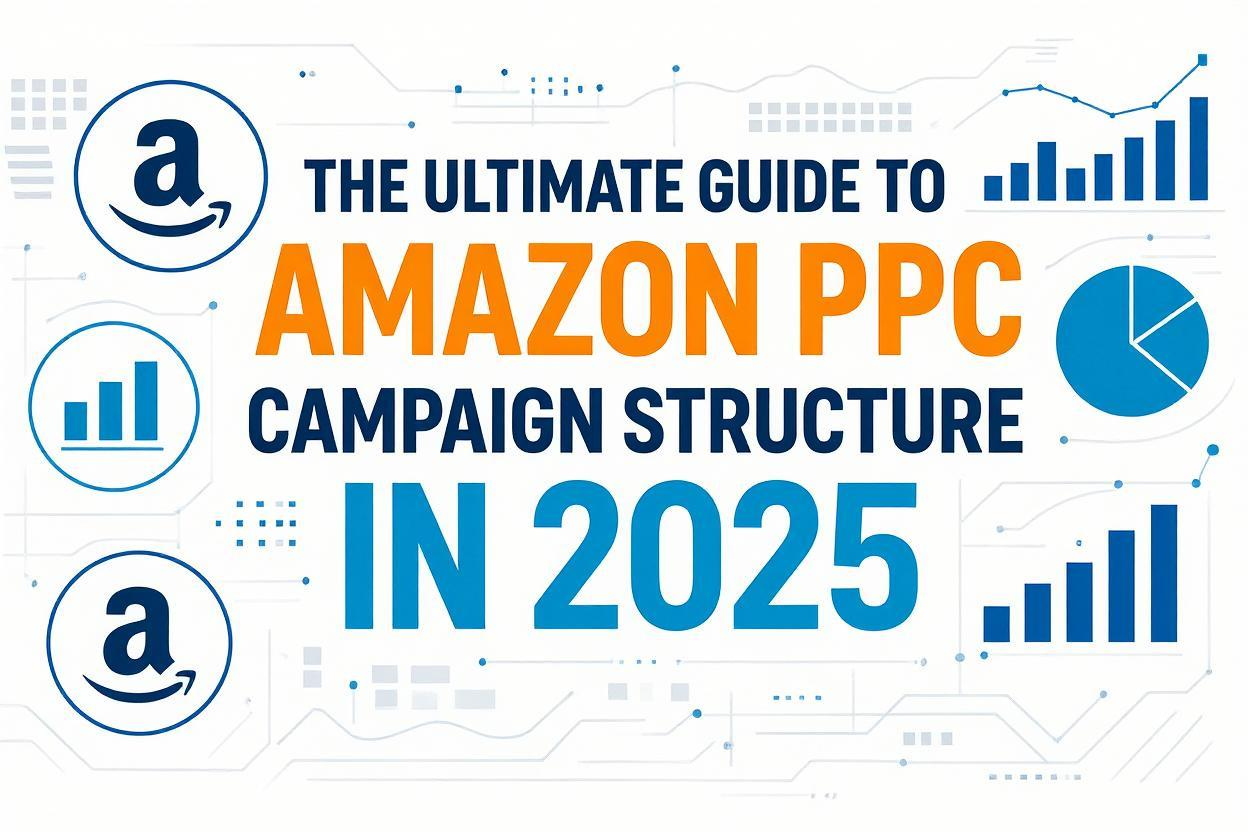
Introduction:
Amazon advertising isn’t just about spending money to get visibility – it’s about building a profitable system. As the ad platform evolves, having a well-structured campaign strategy is the difference between scale and chaos. In this 2025 guide, we’ll walk you through the ideal Amazon PPC campaign structure – from basics to advanced automation.
Why Structure Matters in Amazon PPC
Many sellers run campaigns with no clear segmentation. The result?
-
Wasted budget
-
No clarity on which keywords convert
-
Difficulty scaling or optimizing
A structured approach gives you control, insight, and ROI.
The 3-Layer Campaign Foundation
To build a strong campaign, start with this structure:
| Layer | Purpose | Campaign Types |
|---|---|---|
| Discovery | Find converting search terms | Auto, Broad |
| Harvesting | Test and filter promising keywords | Phrase, Broad |
| Exact Match Scaling | Focus ad spend on proven terms | Exact |
Key Amazon PPC Campaign Types (2025)
1. Sponsored Products (SP)
These drive most of your conversions.
-
Auto Campaigns: Great for discovery. Use all four match types.
-
Manual Campaigns: Build based on keyword data. Segment match types.
2. Sponsored Brands (SB)
Top-of-funnel branding & keyword targeting.
-
Use branded videos or product collections.
-
Great for headline real estate and defence campaigns.
3. Sponsored Display (SD)
Used for retargeting or audience-based targeting.
-
Show ads on competitor listings.
-
Retarget people who viewed but didn’t buy.
4. Amazon DSP (Optional Advanced)
For big-budget brands using behavioural + demographic targeting.
Sample Campaign Structure (One ASIN)
Sponsored Products
| Campaign | Ad Group | Keywords/Targeting |
|---|---|---|
| SP – Auto | Default | Auto: Close Match, Loose Match, Compliments, Substitutes |
| SP – Manual – Exact | Brand + Generic | Exact match keywords from reports |
| SP – Manual – Broad | Broad Group 1 | Related terms for discovery |
| SP – ASIN Targeting | Competitor ASINs | Manual product targeting |
Sponsored Brands
| Campaign | Ad Group | Creative |
|---|---|---|
| SB – Video | Primary ASIN | 30-sec product-focused video |
| SB – Collection | Top 3 ASINs | Lifestyle banner + product range |
Sponsored Display
| Campaign | Targeting Type | Audience |
|---|---|---|
| SD – Views | Retargeting | Viewed but didn’t purchase |
| SD – Categories | Competitors | Top competitor products |
Bid & Budget Strategy (2025 Edition)
-
Discovery campaigns: Start with lower bids, broader budgets.
-
Exact campaigns: Increase bids over time for proven keywords.
-
Product targeting: Prioritise high-traffic ASINs in your niche.
-
Negative targeting: Use Search Term Reports weekly to filter waste.
How to Optimize Weekly
-
Pull Search Term Report
→ Identify converting keywords and add to exact campaigns. -
Check ACoS/TACoS per campaign
→ Pause unprofitable ones, scale winners. -
Use Campaign Placement Report
→ Adjust bid modifiers for top of search or product pages. -
Split branded vs non-branded
→ So you can see how much you’re paying for repeat vs new traffic.
Automation Tools to Use
-
Bulk Campaign Sheet Generator (from eCommercean):
Create dozens of campaigns instantly based on SKUs, keywords, bids, and structure. -
Campaign Budget Rules:
Set rules to increase/decrease the budget based on performance. -
Third-party tools (optional):
Use for smart bidding, alerts, and bulk editing (e.g., Perpetua, Scale Insights).
Pro Tips for 2025 Success
-
Create separate campaigns per ASIN to track performance easily.
-
Use video ads early – they convert 2-3X better in some categories.
-
Allocate 10-20% of the budget to retargeting (SD).
-
Protect your brand with branded keyword defence.
Conclusion:
In 2025, Amazon Ads is a complex ecosystem – but with the right campaign structure, you can turn it into your most powerful sales channel. Start with discovery, scale exact keywords, and optimise weekly using your ad reports.
Want to launch dozens of campaigns in minutes? Use eCommercean’s Bulk Campaign Builder to save time and boost performance.
